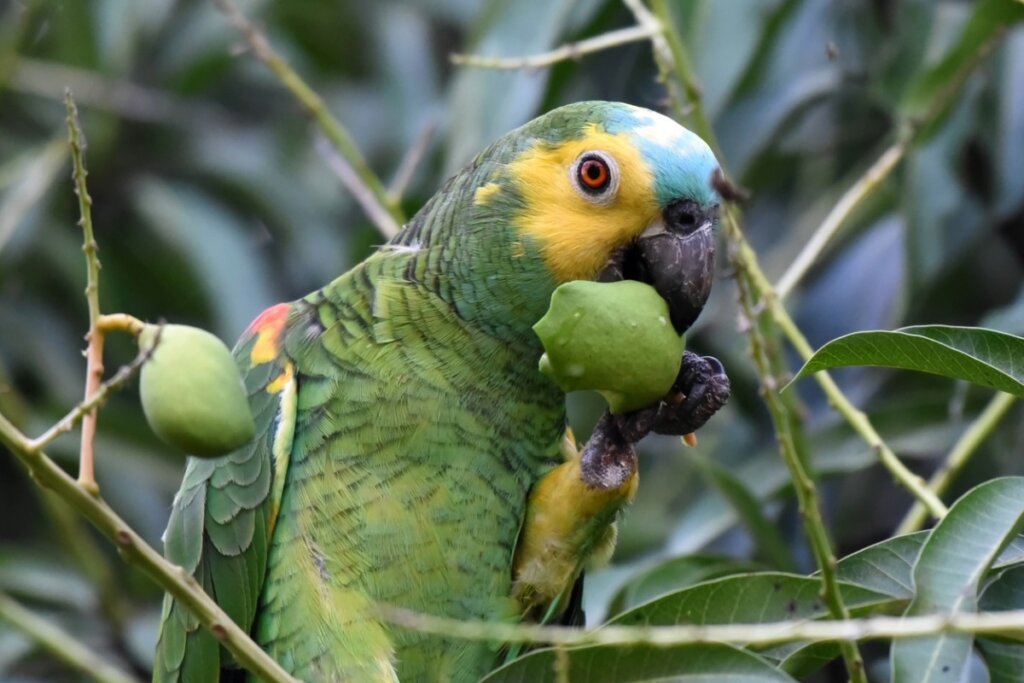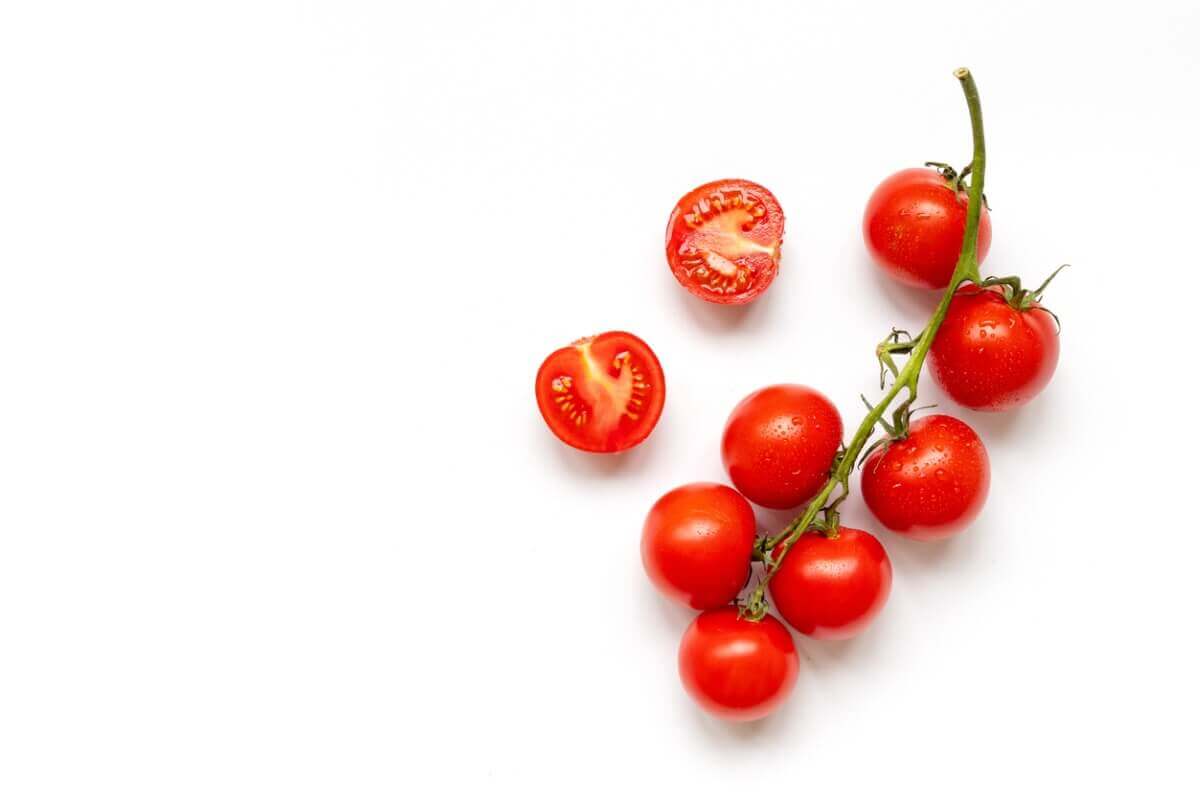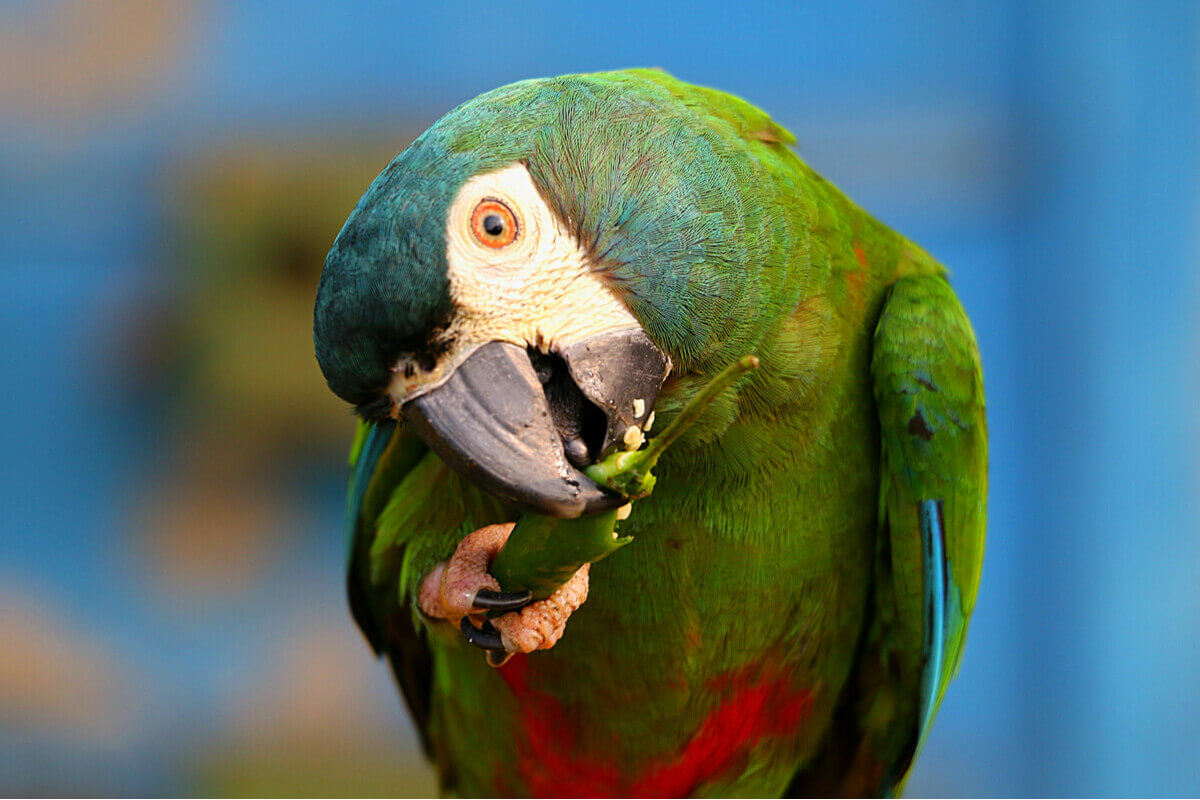Can Parrots Eat Tomatoes?

Can parrots eat tomatoes? You’ve probably asked yourself this question if you live with an exotic bird. Although they feed mainly on vegetable matter, not all fruits and vegetables are suitable for psittacines.
In the specific case of tomatoes, it’s very likely that you’ve found contradictory information on the internet: Some say that it’s forbidden altogether and others say that nothing bad happens when parrots eat tomatoes. So, what’s the right thing to do? Although opinions among experts also vary, there’s no absolute answer. But there are certain considerations you should keep in mind. In the following article, you can find out more about this topic.
Can parrots eat tomatoes?
Parrots are omnivorous animals. However, except for the occasional unsuspecting insect they encounter in the wild, their diet consists strictly of seeds, fruits, and vegetables. When a psittacine is kept outside its habitat, the vegetables found in its natural environment may not be available, so the question arises as to whether it can eat certain foods.
Tomatoes, like any fruit, are a source of vitamins and minerals that are beneficial to the body. In particular, they contain vitamins C, B, E, beta-carotene, and folic acid, as well as the minerals potassium, magnesium, iron, and phosphorus. Psittacines benefit from all these micronutrients without any problem.
So, can parrots eat tomatoes? The answer is yes, although excluding it from the diet if in doubt won’t hurt the animal either. As with any other type of food, you shouldn’t offer it in large amounts or too frequently.

What types of tomatoes are toxic to parrots?
However, we need to make a point on this issue. Tomatoes contain a substance called solanine, an alkaloid present in some solanaceous plants, mostly in the leaves, fruits, and tubers. It’s a bitter-tasting substance with pesticidal properties that’s part of the plant’s defensive system against insects and other animals.
Solanine is toxic to parrots. However, it’s found in higher concentrations in tomatoes that are green. As the fruit ripens, the concentration of solanine decreases. Therefore, even if it contains some of this substance, ripe tomatoes are a suitable food for parrots, as they don’t contain enough of the harmful substance to make parrots sick.
However, if you’re in doubt about how much tomato your parrot can tolerate, it’s best not to offer it or to offer it only occasionally.
However, green tomatoes should never be fed to parrots, as they can cause damage to the digestive system and even anemia, as the solanine has a hemolytic effect. The dose necessary to produce intoxication in a bird will depend on the amount of tomato ingested and the size of the bird itself.
Prohibited foods for parrots
Although it’s debated whether or not parrots can eat tomatoes, there are other foods that can be confirmed as prohibited for these birds. The most important are these:
- Sugar
- Coffee and energy drinks
- Alcohol
- Chocolate
- Dairy products
- Eggs that are raw
- Prepared snacks for humans
- Avocado
- Onion
- Eggplant
- Parsley
- Uncooked vegetables
- Uncooked root vegetables
- Meat
- Mushrooms
The benefits of a balanced diet for parrots
Parrot nutrition is a key factor in maintaining their quality of life and ensuring their health in the face of possible illness or harmful events, such as the stress of a move or sudden climate changes. In addition, the effect of their diet will be clearly reflected in their plumage, vitality, and character.
In captivity, always try to mimic the diet of the parrot in the wild so that the animal gets all the nutrients it needs, even though it doesn’t eat the exact same foods that it would in its natural environment.
This ideal diet consists of the following:
- Seed mix: This should make up around 60% of the bird’s total food intake throughout the day. A good mix contains a minimum of 10-12 different seeds, and sunflower seeds should be reserved as a treat.
- Fruit, legumes, and vegetables: The remaining 40% of the menu will be a fruit salad, soaked legumes, and fresh vegetables. Find out which vegetables your bird should or shouldn’t eat, as some of them can be toxic.
- Nuts: These provide minerals and vegetable fats that are beneficial to your parrot but should be given as a reward and occasionally.
It’s best to distribute this diet in 2 meals each day, one in the morning and one in the afternoon. This mimics the habits of wild parrots, which tend to feed early in the morning and before dark.
There are also feed mixes that help nourish the pickiest parrots and ensure they get all the nutrients they need, although each case must be assessed individually.

Having a balanced diet won’t only keep your bird healthy but will also save you a lot of trips to the vet. As always, your best ally will always be prevention. If you have doubts about whether parrots can eat tomatoes or not, substitute another fruit. Above all, remember that keeping exotic species in captivity implies a great responsibility.
All cited sources were thoroughly reviewed by our team to ensure their quality, reliability, currency, and validity. The bibliography of this article was considered reliable and of academic or scientific accuracy.
- Piñeiro, C. J. S., & Bert, E. (2011). Principios en la alimentación de psitacidas. REDVET. Revista Electrónica de Veterinaria, 12(11), 1-3.
- Morales, H. A. (2005). Fauna silvestre en condiciones de cautividad doméstica en Costa Rica: problemática y soluciones. Biocenosis, 19(2).
- Perlman, J. Feeding Birds for Optimal Health.